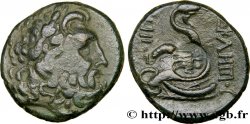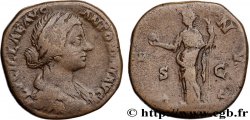brm_599368 - GALLIENUS Sesterce
недоступный.
Товар уже продан в нашем интернет-магазине (2024)
Цена: : 200.00 €
Товар уже продан в нашем интернет-магазине (2024)
Цена: : 200.00 €
Тип Sesterce
Дата: automne 253 - début 254
Дата: 253-254
Монетный двор / Город: Roma
Металл: copper
Диаметр: 26 mm
Ориентация осей монеты: 11 h.
Вес: 17,62 g.
Редкость: R2
Комментарии о состоянии
Monnaie centrée des deux côtés. Usure régulière. Joli buste. Patine vert foncé
Ссылки в каталоге: :
Лицевая сторона
Аверс: легенда: IMP C P LIC GALLIENVS AVG.
Аверс: описание: Buste lauré, drapé et cuirassé de Gallien à droite, vu de trois quarts en arrière (A*2).
Аверс: перевод: “Imperator Cæsar Publius Licinius Gallienus Augustus”, (L’empereur césar Publius Licinius Gallien auguste).
Обратная сторона
Реверс: легенда: VOTIS/ DECENNA/ LIBVS/ S C.
Реверс: Описание: Dans une couronne de laurier.
Реверс: перевод: “Votis Decennalibus”, (Voeux pour les dix ans de règne).
Комментарий
Ce type semble en fait plus rare que ne le laissent supposer les ouvrages généraux. Il est caractéristique de la première émission de Rome en 253. Le buste (A*2) n’est pas commun pour les frappes de bronzes de l’atelier de Rome. Le buste caractéristique est normalement le buste (B*), lauré et cuirassé, vu de trois quarts en avant.








 Cообщить об ошибке
Cообщить об ошибке Распечатать страницу
Распечатать страницу Отправить мой выбор
Отправить мой выбор Задать вопрос
Задать вопрос Consign / sell
Consign / sell
 Информация
Информация












